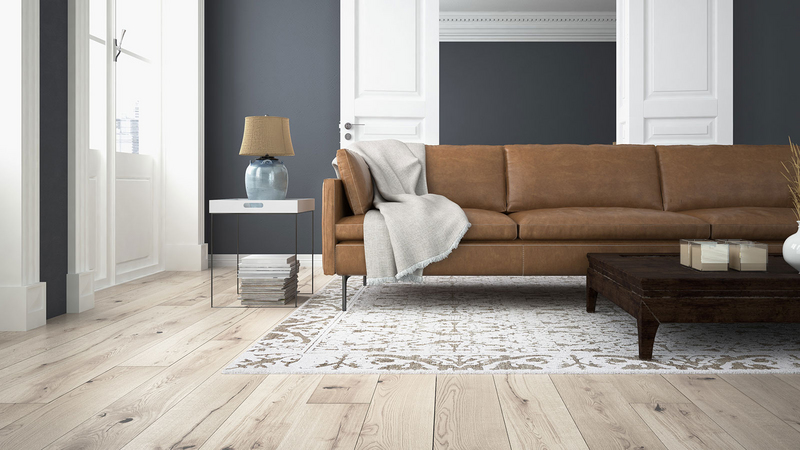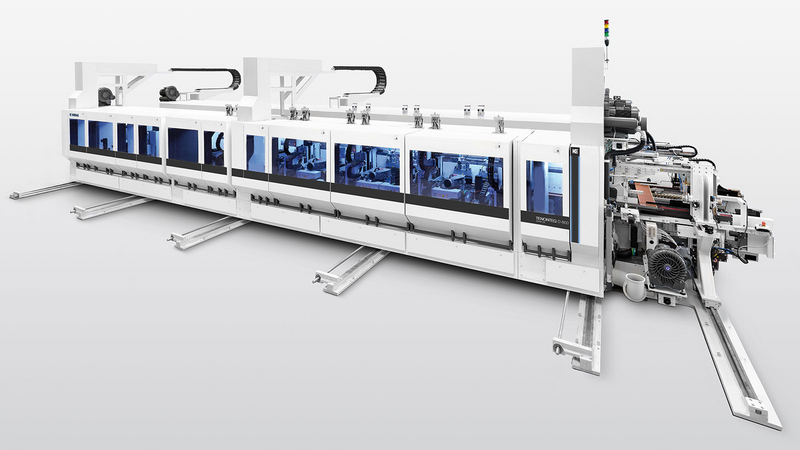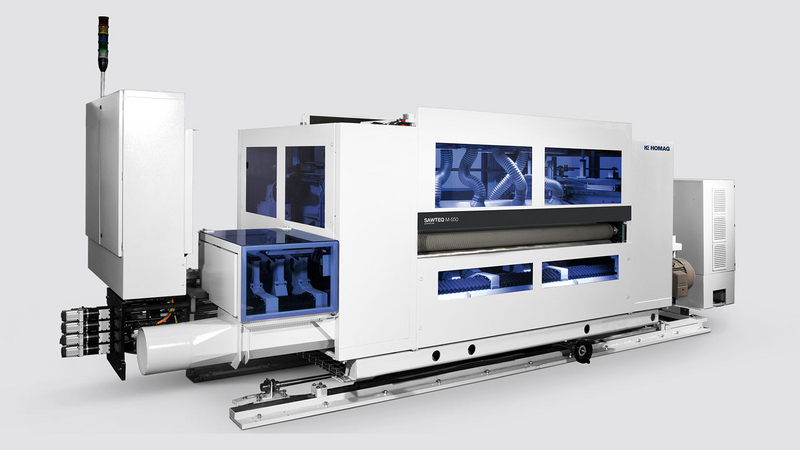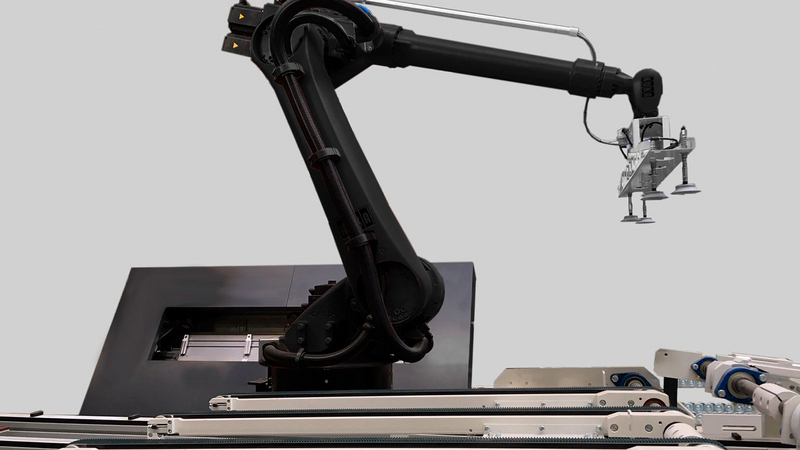Automatic measurement and readjustment in autopilot mode
HOMAG is redefining quality assurance in laminate production.
An article from "Laminat" magazine in 2020. www.hk-magazin.de
HOMAG has proven long and often that they know what they are talking about when it comes to floor production. The classic system, which divides panels in full-size format, separates them, profiles them and then packages them automatically, is part of the standard delivery. However, following on from the furniture industry, the flooring industry is now also demanding the efficient/economic production of small batch sizes. The challenge lies in producing these batch sizes with short setup times. Here, HOMAG offers a solution that is not yet available in this form on the market. Fully automatic measurement of panels during the production process and automatic readjustment of the system thanks to the fully comprehensive servo-controlled units.
Let us envisage floor production, with its individual components, from the very first step. The classic production throughfeed generally begins with infeed by forklift truck. Stack roller conveyors transport the panels to the separating station. Here, a robot picks up the top panel and places it on the deposit roller table. In the next step, a longitudinal rip saw divides the panels into strips. This processing takes place at a speed of up to 110 m/min. All processing units in the rip saw are equipped with servo axes and can be adjusted automatically to the strip dimensions to be produced.
Once the panels have been cut crosswise and separated, a double-sided longitudinal profiler processes them into a tongue and groove format (click profile) in longitudinal throughfeed. This takes place at a speed of up to 300 m/min.
Before the workflow continues with the packaging process, the panels are profiled at the top ends at a speed of up to 80 m/min. In the final step, the panels are cleaned, packaged in cardboard boxes fully automatically and destacked onto pallets.
All setting options required, such as for the sawing units of the throughfeed saws, the format motors on the double-end tenoners and for handling are equipped with servo axes. This offers considerable benefits not only for setup but also for quality control during production.
Quality inspection and production go hand in hand
During production, 3D cameras automatically check the profiled workpieces on an "offline measuring table." This check takes place separately from the actual production line. A robot removes random sample workpieces from production. The longitudinal profile, crosswise profile, workpiece length and workpiece width can be measured. Deviations from the ideal profile that are outside the tolerance are detected promptly without having to stop production. Corresponding countermeasures can therefore be put in place early. The 3D cameras offer a high-resolution option for checking the profile in detail. This check process takes approx. 1 minute for each workpiece. If there are deviations, the correction values are transferred from the measuring table to the double-end tenoner and the position of the units is corrected. As part of this process, the system is "run empty" for a short period to allow the adjustments to be made.
From a process perspective, the aim of keeping the quality of the panels produced at a consistently high level has become much simpler and much faster. A change of profile, which used to take several hours, can now be executed very quickly. Corrections or format changes can be reduced from approximately half an hour to just a few minutes. This allows a reduction in human errors, avoids waste, lowers setup times, shortens production time and saves costs sustainably.
In this process, the complete potential of the system is unleashed and the extremely high degree of automation pays off 100%. Consistent production quality is therefore ensured. With this solution, human quality assessments, which are often very individual, are excluded during setup or adjustment of corrections. Setup times and therefore machine standstills are reduced to a minimum.
Automatic lacquering — fast and flexible
A laminate production line often includes chamfer lacquering. This action is required because the longitudinal and/or front edges of the panels are chamfered during production. The edges are slightly beveled during the production of the profile. The creation of the chamfer inevitably includes the removal of the uppermost top layer of the laminate (the overlay) in this area. To make the surface of the panels durable and moisture-resistant again, the surface must be sealed in the area of the chamfer. In this case, as part of production, the panels go through a mini-chamfer lacquering unit that is integrated on the double-end tenoner.
The lacquer is applied to the chamfer of the panels with a transfer disk. This ensures that the chamfer is fully coated and avoids the surfaces having to be lacquered over.
All lacquer application units in the entire system are connected to a central lacquer supply. The lacquer stocks are stored separately from production in a climate-controlled, dust-free room.
The ability to manufacture small batch sizes flexibly requires speed and adaptability here too. Different decors require different colors for the chamfer lacquering. Regardless of whether repeat colors or special colors are required, a change can be executed within a few minutes. On conventional systems, a color change involves a lot of effort and a corresponding production standstill. Thanks to their cost-effectiveness, here too, the impressively high degree of automation of the units and the innovative lacquer supply reduce the machine standstills.




